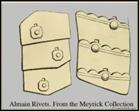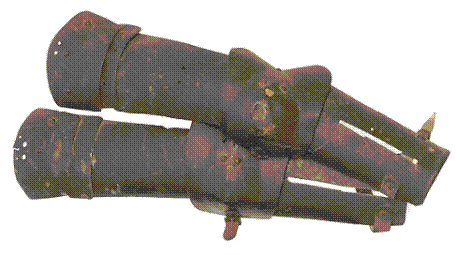


CORNWALL MUSTER ROLL - 1569In 1569 Queen Elizabeth I was on the throne of England and frequent episodes of conflict are a feature of her reign, particularly notable were the wars with Spain.At that time there was no standing army as we have today. Members of the aristocracy were required to support the crown and provide troops as required. Because of the persistent threat from Spain and Scotland, in particular, there was a need for the Queen’s counsellors to have an understanding of the resources available to them. Statutes had been created to add to those from previous reigns and local lords were required to implement them. These statutes involved trade restrictions (such as exporting horses to Scotland), military training (all men to learn to use the longbow and to teach their children and servants to do the same) and musters (meeting as a group to show the numbers of men, the weapons they could bring and the allegiance to the crown). One such edict was made in 1569 and instructed that a muster be called and that a return of military strength be made to the government. In his excellent book “Cornwall; Muster Roll 1569”, H L Douch provides a background to these events in Cornwall and a transcript of the returns made by the parishes across the county. The five county commissioners who had responsibility for organising the 1569 muster were also provided with instructions to see that the existing laws relating to military strength were upheld. Part of the instructions were to ensure that wealthier people with £10 in goods or £5 income from lands provided horses, armour and weapons according to a complex scale. The commissioners had the power to demand at their discretion from those who did not have this level of asset or income. As an example of the elaborate rules, one which was reconfirmed was that every man whose wife wore a silk gown, a velvet bonnet or any necklace of gold was to keep a gelding fit for a light horseman, along with associated harnesses and weapons. Listed below is the 1569 Muster Roll for North Hill. An explanation of the abbreviations and terms follows this listing, the spellings are as originally recorded: |
| a | b | Thomas Spurr | 3 pr. alm. rivets fur. bow sh. arrows |
| a | b | Nichas Spurr | harqubus |
| a | b | John Rawe | bill |
| a | b | Ric Baraball | bill |
| a | ar | John Crab | bow 12 arr scull |
| a | ar | John Dowe | bow. sh. arr scull jack |
| a | ar | John Spurr | pr. alm. rivets fur. bow sh. arrows |
| a | b | Wm Wyvell | alm. rivet fur. bow sh. arrows |
| a | ar | Wm Foote | bow 12 arrows |
| a | b | Edmond Wyvell | pr. alm. rivets fur. 2 bows 2 sh. arrows 2 sallets bill |
| a | ar | Raphe Edgcombe | bow sh. arr scull |
| a | b | Thomas Harvey | bill sallet pr. splints |
| a | ar | Ric Dawe | bow 12 arrows |
| a | b | Christofer Cooke | bill scull |
| a | b | John Byland | bill |
| a | h | Robt Harland | harquebus |
| a | ar | John Notell | bow 12 arrows |
| a | b | John James | bill |
| a | h | Wm Warren | bill harqubus |
| a | b | John Isaack | bill sallet |
| a | ar | Walter Couch | pr. alm. rivets fur. bow sh. arrows |
| a | ar | Thomas Steven | bow sh.arrows |
| a | b | John Blighe | bill sallett pr. splints |
| a | ar | Robt Jackman | bow sh. arr |
| a | b | George Vyncen | pr. alm. rivets fur. bow sh. arrows bill |
| a | b | Thomas Hala | bill |
| a | b | Thomas Erle | bill scull |
| a | ar | Harry Danforde | bow 6 arr |
| a | b | Thomas Demer | bill |
| a | ar | Nicholas Pollerd | bow 12 arr scull |
| a | ar | Wm John | bow 12 arrows |
| a | ar | Thomas Ludge | bow sh. arrows |
| a | b | Wm Blasy | pr. alm. rivets bill |
| a | b | John Stephen | bill pr. spints jack |
| a | h | Robt Even | bill sallet harq |
| a | h | Thomas Isaack | bill jack sallet haqubut |
| a | b | Wm Lukys jun | bill pr. splints jack |
| a | ar | Wm Gale | bow 12 arrows |
| Ric Budge | bow 12 arrows jack scull | ||
| The furniture remayninge in this parishe as aforesaid is one almen Ryvett, 38 bills, 11 bowes, 8 sheaffs and 5 Jacks. a = ableman; ar = archer; b= billman; h = harquebusier | |||
(note – Richard Budge was not recorded as an ableman and, therefore, could not adopt any of the fighting roles shown but was still obliged to supply the bow, arrows, archer’s jacket and helmet)

Almain rivet - Light armour made of overlapping plates, a pair of almain rivets is a breast plate and a back plate. Read more ... 
Bill - Like an agricultural bill hook with a hooked cutting edge on the edge of a 6 foot shaft, sometimes with a spike in the manner of a pike. Read more ... Bow - A longbow, usually about 6 feet long and made from yew as shown at the top of this screen (centre left). Fur – Furnished. Harq - harquebus; an early firearm about 3 feet long as shown at the top of this screen (left) Jack - a sleeveless leather or quilted jacket worn by archers. 
Pr - pair Sallet - a short brimmed helmet Scull - brimless close fitting helmet Sh. arr = a sheaf of arrows; a sheaf was usually 24 arrows, usually made from ash or birch; there were light weight arrows and heavy weight arrows, the heavier arrows were made of steel and capable of piercing mail. Splints = plates of armour protecting the forearms (shown here). |
The images in the banner of this page show (L-R) a harquebus, a longbow, a press of pikes and H L Douch's book the "Cornwall Muster Roll 1569" |